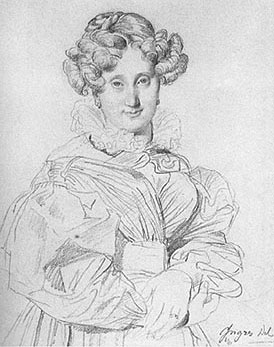| those cheating artists
Art & Optics
Most art historians believe the majority of European painters since the Italian Renaissance deployed elaborate systems of mathematical perspective to achieve their effects. Over the past several years, however, Hockney and Falco have been arguing that, on the contrary, most artists in the High Tradition, going all the way back to Bruges in the 1420s, were deploying a variety of optical devices (ranging from concave mirrors through lenses and cameras obscura and lucida). In effect they suggest that painters (from Van Eyck through Caravaggio, Lotto, Velazquez, Vermeer, Chardin, Ingres, etc.) were using precursors of photographic cameras for centuries before the invention of chemical fixatives in 1839; and that it was only with the spread of such chemical fixatives that European painters, suddenly disenchanted with the "optical look," began to undertake the critique of photography implicit in impressionism, expressionism and cubism and the rest of the modernist tradition.

Hockney's first inklings regarding his theory occured as he was attending the great Ingres retrospective in London in January 1999. He was dumbstruck by the clarity and precision of the quick pencil protraits Ingres had produced in Rome during the early 1800's.
Presently, however, he became convinced that he'd encountered the French master's line — fast, confident, without the slightest groping — somewhear before, that indeed it bore an uncanny resemblance to Andy Warhol's. Warhol had famously traced his images from slide projections. Mightn't Ingres have been deploying some similar sort of optical device — say, a camera lucid?
And come to think of it, Hockney now surmised, couldn't one make out a similar optically derived look in Carravagio, Holbein, Vermeer, Velazquez, Vermeer?
[more]
Hockney has made a lot of fuss about this. If my memory serves me correctly, I saw a presentation by the photography writer David Vestal in the early 70s that was saying the same thing. He was focused on painters after the introduction of photography. He found these same photographic elements in the works of many artists. He even went to the extent of having the paint removed on a the corner of a portrait to find a photograph underneath.
For the record, I don't really consider painters using optical devices cheating.
|

